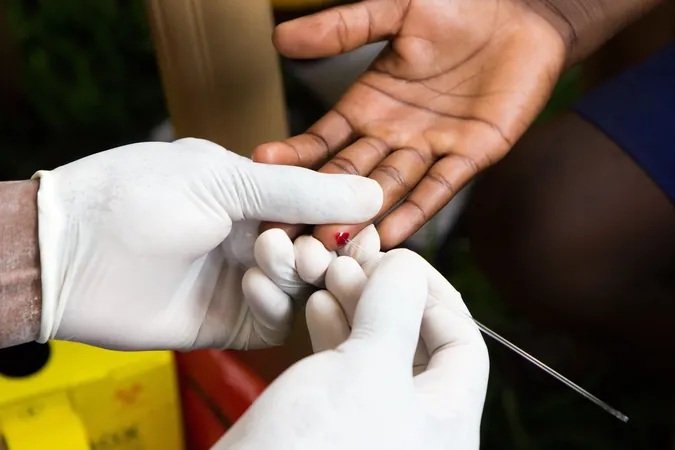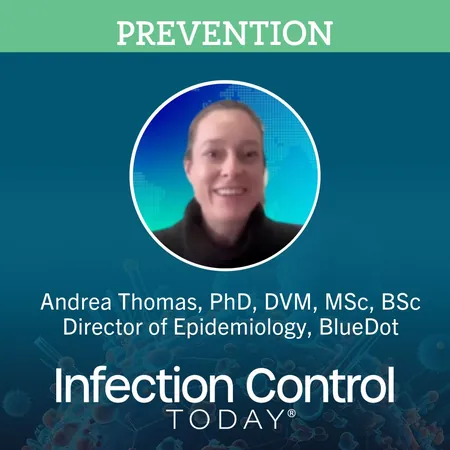
Groundbreaking Study Finds Iron Supplements Are Safe and Beneficial for HIV-Positive Children
2024-11-06
Author: Yu
Groundbreaking Study Finds Iron Supplements Are Safe and Beneficial for HIV-Positive Children
A recent study by the University of Minnesota Medical School has uncovered that iron supplements are not only safe but also beneficial for children living with HIV in Uganda. These findings, published in the November issue of The Lancet HIV, dispel previous concerns that iron supplementation might increase malaria infection risks among this vulnerable population.
The Importance of Addressing Anemia in HIV-Positive Children
Anemia is a critical issue among HIV-positive children, exacerbating their already weakened immune systems. Hemoglobin, the protein in red blood cells, is essential for oxygen transport, and iron plays a vital role in enhancing its concentration in the bloodstream. The risk of anemia is particularly pronounced when hemoglobin levels fall below 11 g/dL for children aged 6 to 59 months and below 11.5 g/dL for those aged 5 to 11 years. If not addressed, anemia can lead to serious complications, including heart issues and organ failure.
Prevalence of Iron Deficiency in HIV-Positive Children
Alarmingly, iron deficiency is the most prevalent nutritional deficiency globally, affecting about 39.7% of HIV-positive children aged 15 and under. Despite these startling statistics, some healthcare providers remain reluctant to prescribe iron supplements due to fears stemming from a 2013 study which suggested potential links to increased malaria infection. However, that study's participants were not utilizing insecticide-treated bed nets and insufficiently engaged in antiretroviral therapy (ART).
Details of the Recent Research
In the new research, spanning from May 2018 to November 2019, 200 HIV-positive children aged between 6 months and 12 years were enrolled. All participants were on ART for at least six months, receiving co-trimoxazole prophylaxis and sleeping under treated bed nets. The trial divided these children into two groups, administering either iron supplements or a placebo for three months, with dosages tailored to their ages.
Results of the Study
The results were promising. At the beginning of the study, the average hemoglobin level for both groups was 11.5 g/dL. By the study's conclusion, those receiving iron supplements had an impressive increase, with hemoglobin levels reaching 12.0 g/dL, while the placebo group noted a slight rise to 11.7 g/dL.
Expert Opinions and Future Implications
"We are thrilled to support the WHO's recommendations on iron supplementation for children living with HIV who are on ART," said Dr. Anne Frosch, co-author of the study and infectious disease expert. "These findings highlight the importance of integrating iron supplementation into the care plans for this population, particularly in conjunction with other preventative measures."
Conclusion and Future Research
With additional research needed to further explore neurodevelopmental outcomes and potential infectious risks amongst children taking iron supplements, this study opens the door for improved health strategies for HIV-positive children and could drastically alter treatment guidelines, leading to better health and longevity for thousands of individuals.
Stay Tuned!
Stay tuned as we continue to follow this critical issue and its implications for public health across the globe!



 Brasil (PT)
Brasil (PT)
 Canada (EN)
Canada (EN)
 Chile (ES)
Chile (ES)
 España (ES)
España (ES)
 France (FR)
France (FR)
 Hong Kong (EN)
Hong Kong (EN)
 Italia (IT)
Italia (IT)
 日本 (JA)
日本 (JA)
 Magyarország (HU)
Magyarország (HU)
 Norge (NO)
Norge (NO)
 Polska (PL)
Polska (PL)
 Schweiz (DE)
Schweiz (DE)
 Singapore (EN)
Singapore (EN)
 Sverige (SV)
Sverige (SV)
 Suomi (FI)
Suomi (FI)
 Türkiye (TR)
Türkiye (TR)